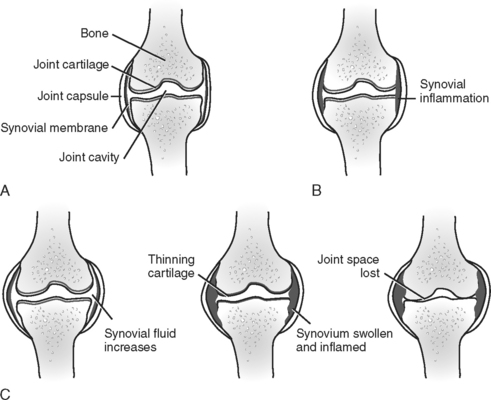CHAPTER 4 Chronic Conditions
Diabetes Mellitus: Type 1 and Type 2
Encopresis (Chronic Constipation/Retention)
Fetal Alcohol Syndrome and Effects
Hepatitis Infections A, B, C, D, E, and G
Herpes Simplex Virus Infection Type 1
Herpes Simplex Virus Infection Type 2
Human Immunodeficiency Virus/Acquired Immunodeficiency Syndrome
Muscular Dystrophy, Duchenne’s and Becker’s
The school-age population with chronic illness is increasing and will continue to increase as medical technology saves and extends the lives of affected students daily. The physical, emotional, intellectual, and social impact of chronic illness on children is immense, and nurses and educators contribute greatly to the goal of enabling each individual to achieve maximum potential in all areas of functioning.
AMBIGUOUS GENITALIA
IV. Health Concerns/Emergencies
IRON DEFICIENCY ANEMIA
IV. Health Concerns/Emergencies
SICKLE CELL ANEMIA
IV. Health Concerns/Emergencies
JUVENILE ARTHRITIS
ASTHMA
IV. Health Concerns/Emergencies
Box 4-1 Classifications of Asthma
Individuals at any level can experience mild, moderate, or severe exacerbations.
Modified from the National Asthma Education and Prevention Program: Expert panel report 2: guidelines for the diagnosis and management of asthma (NIH Pub No 97-4051), Bethesda, Md, 1997, National Heart, Lung, and Blood Institute.
Box 4-2 Sample Questions for the Initial Assessment of Asthma
A “yes” answer to any question* suggests that an asthma condition is likely.
In the past 4 weeks, have you had coughing, wheezing, or shortness of breath:
From the National Asthma Education and Prevention Program: Expert panel report 2: guidelines for the diagnosis and management of asthma (NIH Pub No 97-4051), Bethesda, Md, 1997, National Heart, Lung, and Blood Institute.
NOTE: Most states have laws allowing students to carry medication for asthma and anaphylaxis. Self-administration of medication is allowed when determined appropriate by school nurse, parent, and HCP, and management procedures are in place when necessary. Be knowledgeable about the Nurse Practice Act and state and school district policies and guidelines. The National Association of School Nurses (NASN) has a position statement on asthma.
Stay updated, free articles. Join our Telegram channel

Full access? Get Clinical Tree



